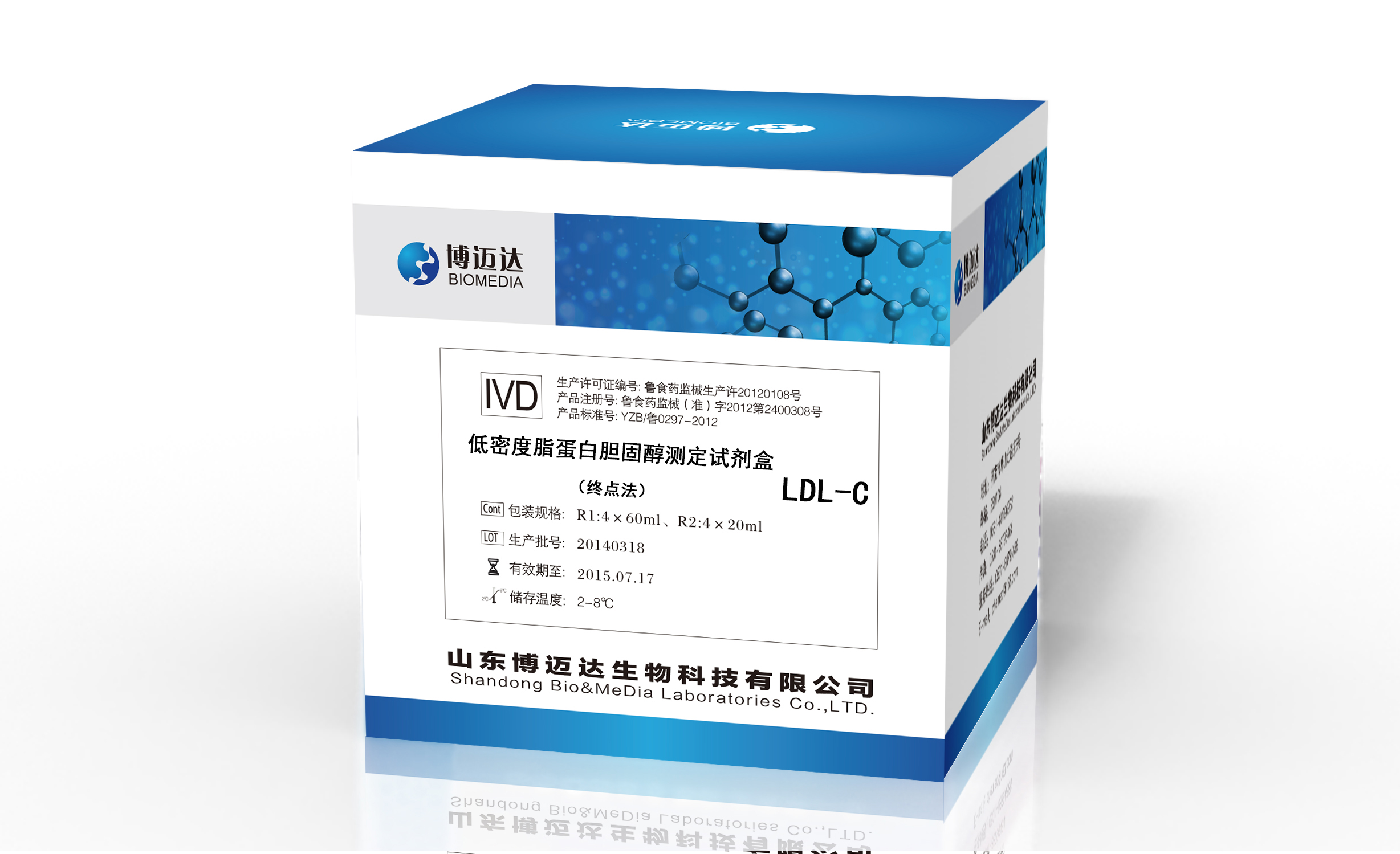
During the assay, polyanions are absorbed on low density lipoprotein cholesterol(LDL-C) particles. In the meanwhile, the very low-density lipoprotein(VLDL) and high density lipoprotein (HDL) can be dissociated, generating cholesterol molecules. Cholesterol enzymes in the reagent can react with these cholesterol molecules, and the hydrogen peroxide generated in the reaction will be consumed due to the lack of coupling reagent. After the addition of specific surfactants, cholesterol molecules in LDL are released and then react with 4-AAP, CE, COD and POD. The reaction, also called Trinder reaction, generates purple chelate, and the color saturation of chelate is proportional to the concentration of LDL-C. The LDL-C level in samples can be calculated by comparing the results with that of the standard, which is prepared in the same way.
Product Features
Linearity range: 0.07 – 10.40 mmol/L; linear correlation coefficient ≥0.990; linearity deviation is within ±10%.
Absorbance of blank ≤ 0.10
Sensitivity: the difference of absorbance per unit of concentration (ΔA) ≥ 0.01 while testing the specific sample of concentration of 3.89 mmol/L.
Accuracy: Relative deviation is within ±10%.
Precision: intra assay CV(%) ≤ 5%; inter assay CV(%) ≤ 5%.
Technical Parameters

Reference range: 0.18 – 3.12 mmol/L
Packaging Specification
R1: 1×30 ml, R2: 1×10 ml
R1: 2×30 ml, R2: 1×20 ml
R1: 2×45 ml, R2: 2×15 ml
R1: 2×60 ml, R2: 2×20 ml
R1: 4×60 ml, R2: 4×20 ml
R1: 3×80 ml, R2: 4×20 ml
Calibrator: additional purchase
Quality control: additional purchase
Storage and Period of Validity
Store the Biomedia LDL-C test kits at 2 to 8 ℃ protected from light. The period of validity of unopened reagents can be up to 16 months. Opened reagents can be valid for 1 month if stored at 2 to 8 ℃ protected from light.